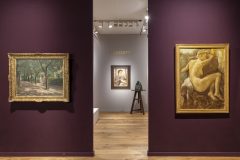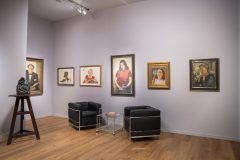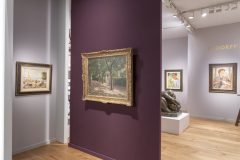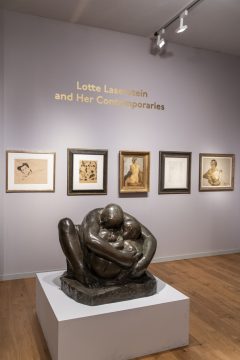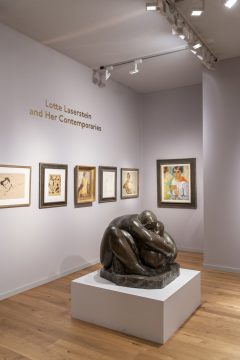Lotte Laserstein and Her Contemporaries in Pre-War Berlin
Lotte Laserstein (1898-1993) is a painter of the “lost generation”, who had their breakthrough between the two world wars and were no longer noticed in Germany after 1945.
After studying at the Akademische Hochschule für Bildenden Künste in Berlin, her career began in 1931 at the latest with her 1st solo exhibition at the Gurlitt Gallery, Berlin and participation in the Große Berliner Kunstausstellung at the Belvue Palace. From 1933 onwards, the Nazis made it increasingly difficult and later impossible for her to work because of her Jewish origins. In 1937 she emigrated to Sweden, where she lived until her death.
In 2003, her work was comprehensively presented at the Verborgene Museum (Berlin) to a broad public for a first time. Entitled “Lotte Laserstein. Face to Face”, a major
museum exhibition in cooperation with the Städel Museum in Frankfurt and the Berlinische Galerie followed in 2018/19.
Her impressive portraits show images of the modern woman. Stylistically, she moves between Realism and New Objectivity, whereby especially the comparison with the latter underlines the independence of her realism
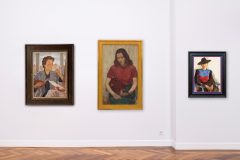
In 2023, we will juxtapose an extensive selection of Lotte Laserstein's works with those of her Berlin contemporaries, thus initiating an exciting dialogue. Among them are works by Käthe Kollwitz, with whom Laserstein worked on the board of the Verein Berliner Künstlerinnen, and Max Liebermann, who as president of the Prussian Academy of Arts opposed rigid academism, from which Laserstein ultimately also benefited.
Berlin was the most vital art centre of the interwar period. A fine selection of works by Georg Kolbe, George Grosz, Ernst Ludwig Kirchner, Erich Heckel, Gabriele Münter, Karl Schmidt-Rottluff, Emil Nolde and others bears witness to this.
